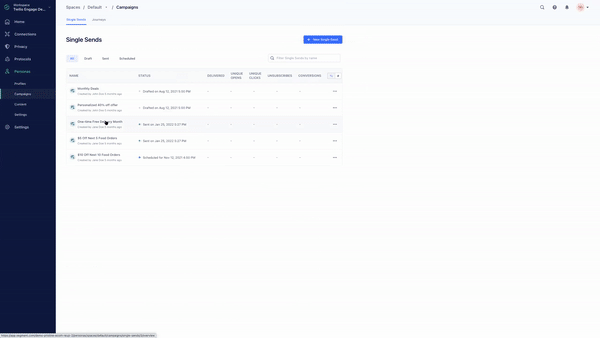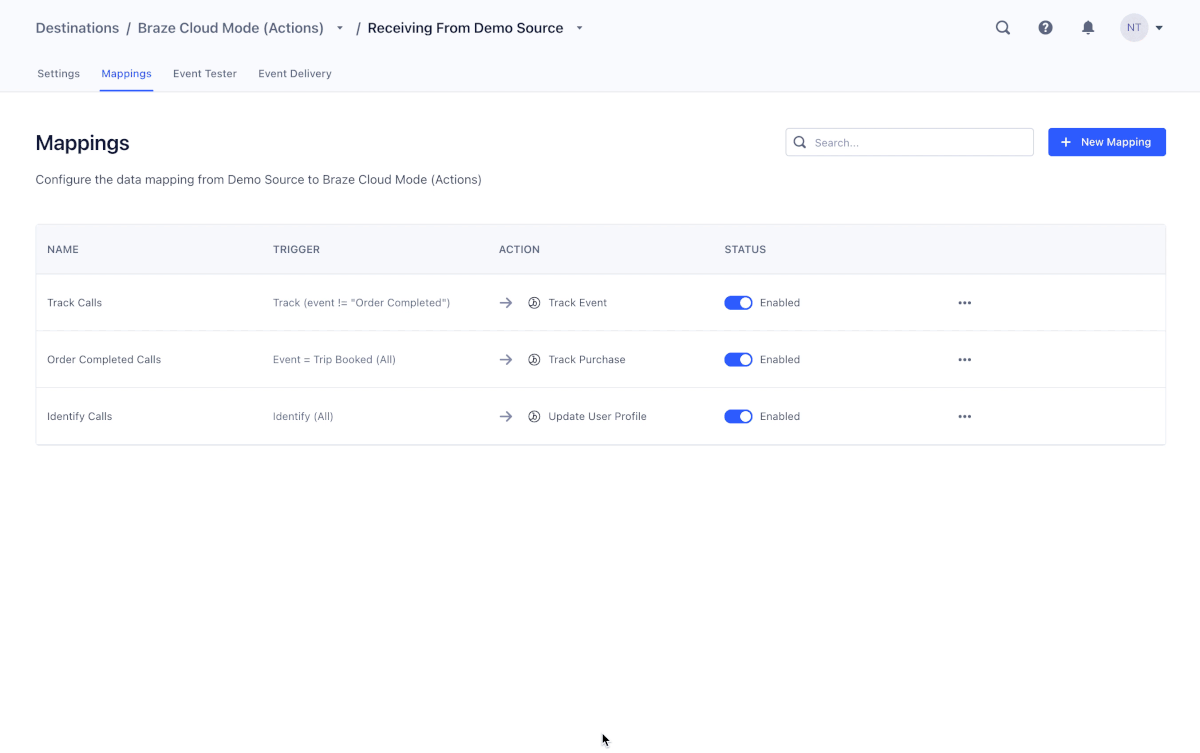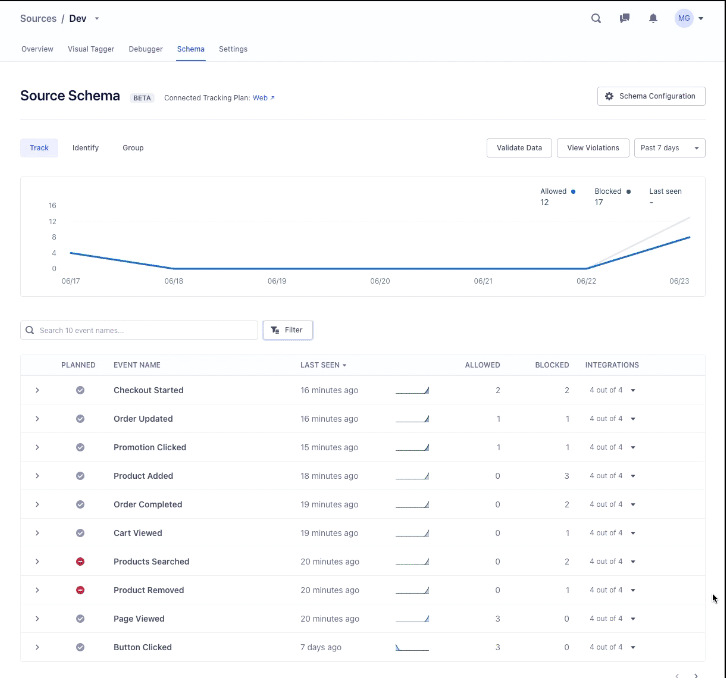Twilio Segment product recap: our biggest innovations in 2021
This blog provides a consolidated look at the products that Twilio Segment shipped in 2021!
This blog provides a consolidated look at the products that Twilio Segment shipped in 2021!
In the last year, we saw an unprecedented shift in the world around us. We freed Britney. Shang-Chi saved the world from impending doom in his big-screen debut. Taylor Swift re-recorded and re-released the RED album. Ted Lasso took the world by storm again with his positive energy (which we all needed). And, of course — you all saw this coming — COVID persisted across the globe.
Regardless of what music you listened to or shows you watched, 2021 continued to see a shift in how people worked, shopped, managed finances, received healthcare, and so much more. As a result, companies needed to innovate and build best-in-class digital experiences to maintain and grow their relationships with customers. Whether that was recommending the right show, product, or vacation location, customers demanded personalized experiences. And, at the heart of each and every one of those experiences was customer data.
For Twilio Segment, that meant continuing our mission to deliver the data foundation that enables intelligently personalized experiences. In 2021, as a part of Twilio’s broader Customer Engagement Platform initiatives, we made major product investments that allowed our customers to:
Drive personalization at scale
Build on a customizable and extensible data foundation
Practice good data etiquette and adapt to ever-changing global data regulations
By unlocking these three capabilities for our customers, Twilio Segment earned the position of #1 CDP by IDC and our customers via G2.
Read on for a recap of some of our biggest innovations in 2021.
Did you know that customers are 60% more likely to become repeat customers after receiving personalized communication? Boosting retention can have big returns. According to Bain, increasing your customer retention by just 5% can increase your profits by 25%.
Most marketers still face the same obstacles they have had for years. They’re constrained by poor data infrastructure that makes it impossible to deliver real-time personalization.
Marketers have used Twilio Segment to solve data problems since we launched Personas in 2017. In 2021, we took that even further with solutions that support journey orchestration, real-time audience editing, and more. Check out the details below:
Twilio Engage (pilot): In 2021 we made a big announcement at our annual SIGNAL conference with our launch of Twilio Engage — the first of many products to help us realize the mission of data-driven customer engagement. Twilio Engage delivers real-time customer data within the Segment platform itself, which empowers marketers to design engagement strategies across all channels and integrations and removes their dependencies on data teams.

Journeys: With Journeys, marketers can better personalize experiences by planning how and when to engage customers with the right campaigns and messages. Journeys enables you to define steps in a user’s journey based on their event behavior and traits. You can build Journeys from your tracking events, traits, computed traits, or audiences. At each step of the Journey, you can send your list of users to any personas-compatible destination.


Personas enhancements: In addition to the two new features listed above, we also made a number of enhancements to our Personas product. To name a few - we
made it easier to organize the audiences that you set up in Personas, made real-time audiences editable, and built a CSV downloader to help marketers access lists created in Personas. Each of these features makes it even easier to build and activate the audiences you need for personalized marketing.
There’s no one-size-fits-all option for data infrastructure. Today’s most innovative companies don’t buy all-in-one SaaS suites - they invest in tools that empower developers to build the systems that drive personalization and growth.
Twilio Segment has delivered flexible and customizable tooling since the beginning. From our first open-source library, Analytics.js, to features like the Developer Center and Functions, empowering our customers to build what they need has always been a top priority. After all, without the right customer data infrastructure, it’s impossible to deliver personalized experiences.
In 2021, we continued our focus on delivering flexible and customizable data infrastructure. We added multiple new features to our Developer Toolkit that enabled customers to streamline data collection, customize and extend their integrations, and scale their data infrastructure effortlessly.

Collect more of the data you need, the way you need it, with new and improved sources:
Analytics.js 2.0: A powerful and simple way to track customer data for your website without having to learn, test, or implement a new API every time. Analytics.js 2.0 has been re-engineered from the ground up to improve performance, data observability, and the overall developer experience. Analytics.js 2.0 also has a batching feature, which improves app performance by delivering multiple events per call.
Integrate your data the right way faster, and to more destinations:
Destination Actions: With integrations built using our new Destination Actions framework, you have more control over how data is mapped to a specific destination. You can orchestrate custom actions and tailor predefined actions within the Twilio Segment UI to trigger specific behavior in destinations, such as adding a user to an audience, creating or updating a user profile, or initiating a broadcast campaign. To date, we’ve rebuilt five destinations on the actions framework including Amplitude, Braze, Slack, Customer.io, and FullStory.


New Destinations: learn more about the new Destinations added to our platform (currently in beta):
Google Analytics 4 - the latest iteration of Google's web analytics platform that can be used for websites and applications.
Google Enhanced Conversions - enables you to improve the accuracy of your conversion measurement in Google Ads.
TikTok Conversions - connects your data directly to TikTok for solutions like dynamic product ads, custom targeting, campaign optimization, and attribution.
Facebook Conversions API - allows server-side events to be used in measurement, reporting, and optimization, just like browser pixel events.

Easily scale and manage your Twilio Segment implementation:
Public API (beta) - The Public API allows customers to programmatically manage their entire Twilio Segment implementation via code. It enables developers using the Segment platform to easily manipulate their Segment configuration using their own workflows in a simple and reliable experience. The new API has more coverage across the Twilio Segment app, and allows developers to easily set up Twilio Segment features, manage access, and connect to their own change management systems.
Workspace Home- In an effort to improve our customers’ visibility into their workspace, we built Workspace Home. Workspace Home is a dashboard that gives you a single consolidated view of your workspace — its health, status, and metrics for specific integrations over time making the data you need day-to-day easier to find.

Multi-Instance Destinations: Multi-Instance Destinations gives you the ability to move faster by customizing destinations to support multiple teams and use cases. It unlocks the ability to route the same data to multiple instances of a destination. This is especially useful if you need to support multiple teams or need to migrate from one instance of a destination to another without losing any data.

Export Schema: With this new feature, you can now share Source Schemas with users who don’t log into Segment and give them visibility into the events you’re tracking. This is also a great way to easily tabulate event counts and audit your high-usage events to make sure they’re providing value to your business.
Archive Unplanned Events: Protocols and source schema users can now archive unplanned events. This new workflow helps you improve data governance by achieving an “inbox zero” for unplanned events. Specifically, you can quickly filter for new unplanned events on your schema and either add them to your tracking plan or archive them, keeping your schema clean and up-to-date.

By 2023, 65% of the world’s population will have its personal information covered under modern privacy regulations. Moreover, 90% of consumers believe that how their data is treated reflects how they are treated as customers.
Protecting your customers’ data privacy and practicing good data etiquette are not just items to check off a list, they also help you earn and maintain your customers’ trust.
If you have (or plan to have) customers around the world, you will face data regulations that vary by region. As such, we shipped several new product features to support our global customers with Regional Twilio Segment in the EU.
Regional Twilio Segment in the EU has all the same functionality you know and love, performed locally on infrastructure in the EU. Check out what we shipped below:
Regional data ingestion - Collect customer data locally in the EU through our endpoint in Dublin. With regional data ingestion, you have more
control to ingest customer data in the EU.
Regional data processing - With regional data processing, customer data is processed, filtered, validated, and deduplicated locally on infrastructure hosted in the EU.
Regional data storage - Reduce long-term data exposure. Regional data storage lets you store all of your event data, including the personal data of your customers, locally using Segment-hosted in-region archives or in your own S3 bucket in the EU.
Regional Twilio Segment is currently available for all Business Tier customers.
While we can’t predict what’s going to happen in 2022, we do know that delivering the right customer experience will be essential to every company’s continued success. We look forward to sharing more detailed plans on what’s coming up in our roadmap for 2022.
If you want to try Twilio Segment out for yourself, sign up for a free account here. Or, if you’d like to chat with our sales team to see these features in action, request a demo.

Our annual look at how attitudes, preferences, and experiences with personalization have evolved over the past year.